Their heroism was often anonymous. They paid for it with their own lives and there is no place for them in anyone's memory. The Ukrainians of the time considered them traitors. Poles who survived the slaughter remembered mainly death and unimaginable cruelty ...
The Volhynian-Galician slaughter is one of the bloodiest episodes of the 20th century and one of the largest massacres of the civilian population during World War II in Europe. Although for a long time these events could not be spoken of loudly, today we know more and more about the crimes of Ukrainian nationalists in Volhynia and in Eastern Galicia.
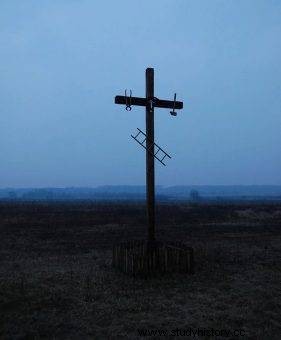
Many towns in Ukraine have simply disappeared from the face of the earth along with their Polish, Jewish and Ukrainian inhabitants. The illustration comes from the book by Witold Szabłowski entitled Righteous Traitors. Neighbors from Volhynia ”
On the other hand, very little is said about the tragedy of those Ukrainians who refused to participate in the murders and even saved Poles from death, showing particular heroism and often paying the highest price for it.
Hidden Heroism
About 100,000 Poles died as a result of the massacre in Volhynia, Eastern Galicia and the Lublin region. Several thousand Ukrainians were killed in Polish retaliatory actions. It is not known how many Poles were saved by their Ukrainian neighbors. It must be thousands of people - Witold Szabłowski writes in the book "Righteous Traitors. Neighbors from Volhynia ”.
It will be very difficult to pin down this number. Ukrainians often performed their heroic deeds in complete secrecy from their neighbors and even from their immediate family. Many relationships were lost because of this - the heroes took them to the grave with them.
Keeping a secret was necessary. Helping Lachom it was not a mass instinct. Numerous Polish testimonies emphasize the passivity of Ukrainian neighbors, if not open hostility and participation in the murders. Much pressure was exerted on those who wished to remain neutral, even.
If the fear among exterminated Poles was so great that it commanded instinctively a desperate escape, sometimes even without looking at their loved ones, murdered nearby, also for Ukrainians watching the ordeal up close, it must have been paralyzing, the more so as you could lose your life for trying to help yourself. - writes Romuald Niedzielko in the "Kresowa Book of the Righteous".
For the saved life - death!
In the book "Genocides and People" Leon Karłowicz cites the research of Wiktor Poliszczuk, who calculated that there were about thirty thousand Ukrainians killed for saving Poles . Ewa and Władysław Siemaszko, in turn, recorded 242 specific cases of aid provided to Poles in Volhynia itself by about 350 Ukrainians (255 were mentioned by name), of whom 313 died.
Romuald Niedzielko created statistics based on data collected until 2007, when his "Kresowa Book of the Righteous" was published. His calculations show that in the Volyn voivodeship alone, Poles were helped in 255 towns, where the total number of murdered people amounted to over 11,000 people.
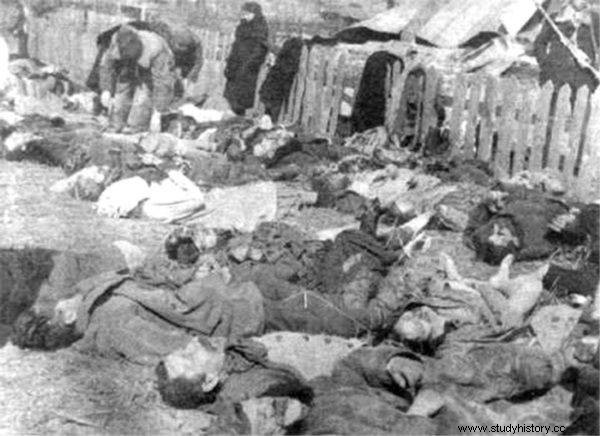
A different face of the Volhynian Massacre. How many Ukrainians saved Poles' lives?
794 Ukrainians were involved in the efforts to save their neighbors, 530 of whom we know by name. They saved 1,806 people. These are only numbers, however, and very incomplete. There are dramatic stories behind every single digit.
The fair-haired girl among the dead
I am Hania. Hanna Fedorowna, née Bojmistruk. This is what I have in my documents and I feel that way, although in reality I am something completely different - says one of the heroines of Witold Szabłowski's book "Righteous Traitors. Neighbors from Volhynia ”.
Mrs. Hanna was brought up in a loving family. She mentions that she was missing nothing. She found out years later that she was a Pole rescued from the Volhynia massacre . Her biological parents died in the Banderites' attack on the Polish village of Gaj, which no longer exists.
Two days after the massacre, people from my village were going to the Grove. The gang that murdered people there returned and ordered the people from Kaszówka to bury the dead, because they had already begun to decompose. Then they found me, somewhere among the fruit trees. Apparently, I was crying in the barn and there were only dead bodies lying next to me - tells the story of a survivor.
People consulted what to do with a little fair-haired girl. If the UPA found out about it, they could burn down the entire village . Finally, one of the hosts said: What is going to be, it will be, but we will not kill the kid. This is how she found her new family, which from then on, like the rest of the inhabitants of Kaszówka, hid her true origin out of fear. And there was something to be afraid of.
A baby in a pile of bodies
The village of Stasin in the district of Włodzimierz Wołyński. In the pile of murdered Poles there was a live, less than one year old child. He was unconscious for two days. After that time, the bodies were buried. To facilitate the work, the bodies were pulled to the pits by means of hooks attached to long handles.
Hooked by such a hook, the baby woke up and began to cry. A Ukrainian named Platon took the injured child home and entrusted him to his daughter, who took him to a hospital in Włodzimierz. There, the rescued little Marian Drożdżyński was taken into the care of his father, who miraculously survived the slaughter.
This is where the limit of happy endings has been exhausted. For saving the child, UPA members threw Platon alive into a well and smashed him with tree trunks .
The Ukrainian is afraid of the Ukrainian
The threat made many rescuers chose to remain anonymous. One of them was a young Ukrainian who knew well the distribution of the UPA bands in the surrounding forests. Wandering through the wilderness, he safely led the Polish refugees from Sasin to Włodzimierz. When they got there, he disappeared into the darkness without giving his name.
Caution was not exaggerated. Zofia Szwal, a former resident of the village of Orzeszyn, tells how in Gruszowo some Ukrainians refused to murder Poles. The Banderites gathered them all and hanged them on the trees next to the church .
The families were not allowed to bury the bodies of their relatives and neighbors. Swarms of flies and flocks of birds hovered over the decaying corpse in the July sun - recalls . These pictures were meant as a warning to others who would like to feel sorry for the Lachs.
Fear sometimes paralyzed even the Banderites themselves - after all, not all of them joined the UPA to murder defenseless women and children. Example? Two Polish women who escaped from their village returned home to take some food. They didn't notice the armed men approaching.
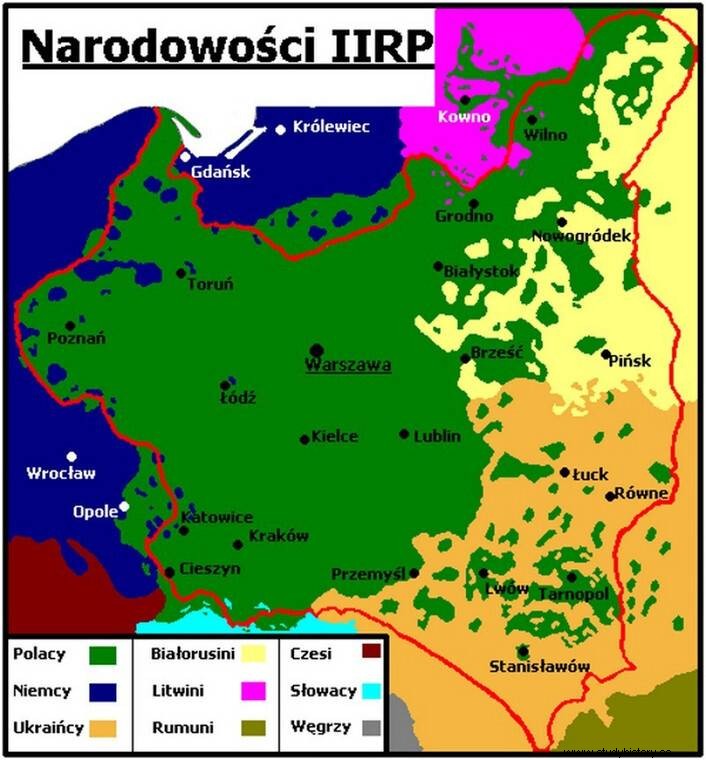
The map shows the distribution of various nations living in the Second Polish Republic. Poles and Ukrainians were neighbors on the entire south-eastern borderlands (author:Mix321, license:CC BY-SA 3.0).
They looked around anxiously to see if anyone could see them and ordered the women to flee. They said that if they came across other UPAs, they would surely kill them. They also forbade anyone to tell about this meeting - they knew that if anyone found out about their deed, they would share the fate of the slaughter victims.
A neighbor with a pitchfork
The majority of the rescuers were emotionally connected with the survivors:relatives, friends, and neighbors. This was the case in the village of Łuczyce. At the end of August 1943, most Poles fled, terrified by the events in the area. However, the Denys family did not want to believe that something bad could happen to them themselves from the Ukrainians, with whom they always lived in harmony.
One day, a neighbor, Semen Harasimowicz, burst into their house. He warned that a group of Banderites was approaching. There was no time to escape, so he hid Mrs. Denys and her daughters in his own basement. The Upowcy knew that the Polish family had been at home just a moment ago, because it was on fire under the kitchen. They wanted to search the neighbor's house.
Semen, driven by desperate courage, grabbed a pitchfork and, shaking them menacingly, swore that there were no Poles in his house and does not allow searches. Fortunately, the attackers mistook him for a maniac, laughed at him and left him alone.
Mr. Denys, meanwhile, was working in the fields. When he saw Banderites walking around the yard, he hid in his aunt's empty house. He only left at night. He expected to find the dead bodies of his relatives, but met his wife as she crept to pick up a few needed things from the farm. If it wasn't for the neighbor, the whole family would not have survived.
The righteous don't live long
A similar story was told by Mrs. Janina Ostrowska from the village of Poluchny. One day, a Ukrainian friend from a neighboring village, who was out of breath, also ran into their house. He called his father into the forest. This one did not come back. After lunch, the concerned family heard despairing screams. Without much thought, the mother with four children, including several-year-old Janina, ran away from home and took refuge among the trees.
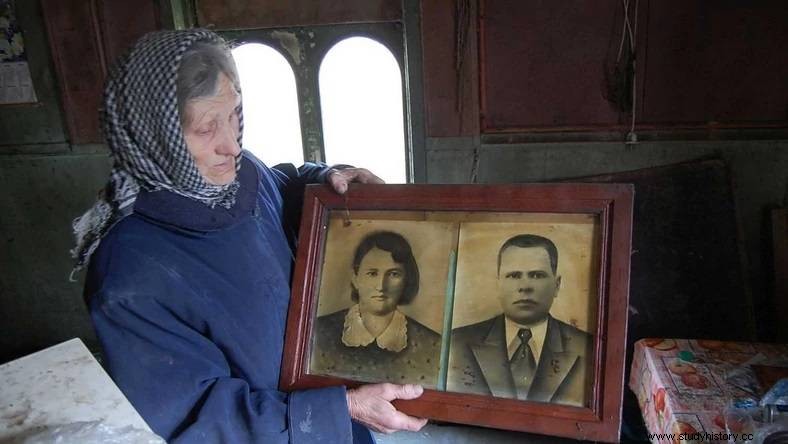
Mrs. Szura shows a photo of her parents. Mrs. Szura's father always repeated:"Poles are our brothers." The illustration comes from the book by Witold Szabłowski entitled Righteous Traitors. Neighbors from Volhynia ”(Znak 2016).
There were sounds of slaughter everywhere. In the morning, exhausted and thirsty, Janina and her sister went to the aforementioned Ukrainian for water. It turned out that he had come running the day before to warn his family about the attack. It was too late to come back for them all, so he only hid his father. Soon he took the rest of the family with him, and after a while he moved them to safety.
He similarly saved about twenty people. The UPA then murdered him and his entire family.
Mrs. Szura, who talks to the dead
My father always told me:Poles are our brothers. Ostrówki and Wola Ostrowiecka were next to our village. Daddy used to go there to play, he was friends with people. So I already have in my head that we and the Poles are one thing - tells the story of Ołeksandra Wasiejko, known as the grandmother of Szura, in the book entitled "Righteous Traitors. Neighbors from Volhynia ”.
In the places mentioned by her, the Banderites intended to burn women, children and old people in the church. A detachment of Germans interrupted them. After a short exchange of fire, the UPA withdrew from the village, driving the captured Poles with them. In the field, they ordered everyone to lie down on the ground and killed them, one person after another. From then on, the locals called this place Trupim Pole. Over time, they were overgrown by the forest.
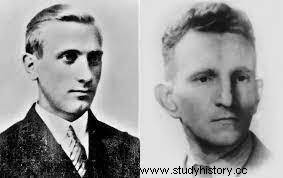
Dmytro Klaczkiwski and Roman Szuchewycz - Ukrainian nationalist activists responsible for murdering Poles (source:public domain).
Grandmother Szura helped a Polish historian, Leon Popek, find this mass grave after many years. She also showed him one more place, which her father had indicated to her one day: (...) one day my father took me to the forest with a wagon. He found three pines, took a knife, and cut a small cross in each of them - the woman is talking.
He said, "There was a terrible time here recently, people were murdering one another. One family managed to escape. I knew them from before the war, they lived near our cottage, in a chutor. They were hiding in this forest, a husband, a wife and a daughter. Unfortunately, someone found out about them and one day, when I arrived, they were already lying under those trees. I dug a hole and buried them here. ”
Then my dad raised his eyes, looked at me and said:" One day Poles will come here and they will look for them. I won't see it, but you surely will. Bring them here ”.
Later, Mrs. Szura found out that her father not only buried these people, but had previously taken food for them to the forest for a long time. His daughter has been visiting these places for many years and praying for the Poles killed there. Not everyone understands this. She tells that a neighbor asked if she was not afraid to walk in the woods in the dark. The locals believe that it is haunting here. But Mrs Oleksandra doesn't believe it.
If a human comes to pray to them, they won't do anything wrong. And what do they not know that my father brought them food to the forest? (...) That my family has come here since the war and is praying for these people? They know it well. So no one will scare us. And I told this neighbor:“If yours did something against the Poles, be afraid. And if not - then keep living calmly. ”
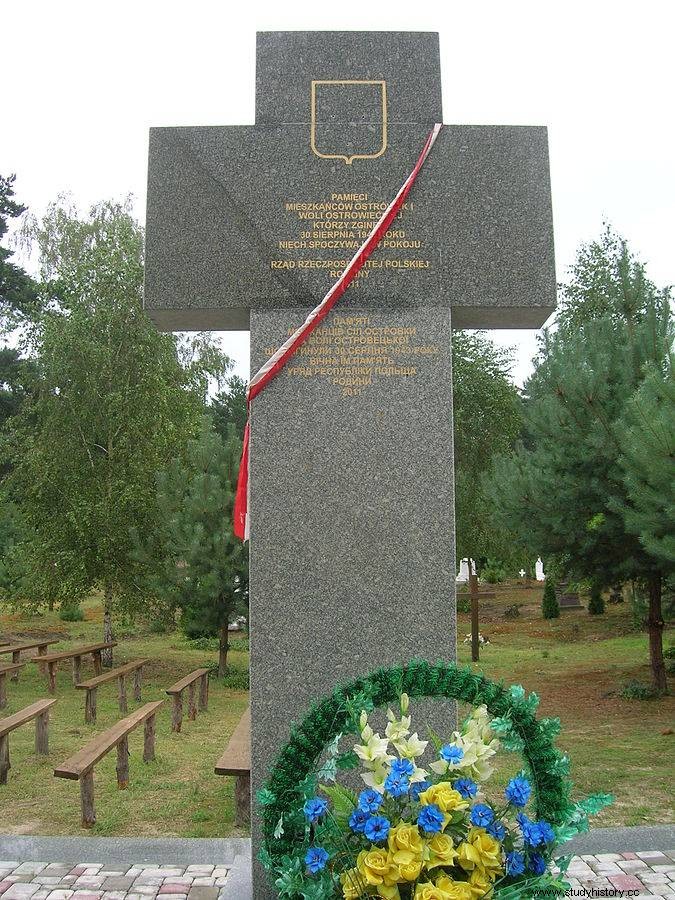
Monument in Ostrówki commemorating Poles murdered by the UPA in Ostrówki and Wola Ostrowiecka (author:Glaube, license:CC BY-SA 4.0).
Mrs. Szura is hanging on the cross that stands today in Trupi Pole, rucznyky - traditional Ukrainian scarves, used at weddings and funerals. He also comes to talk to the dead sometimes.
How do I talk? Normally, as if I were talking to the living. To the elders I say:“ I wish you were with us. It is always happier when there are people of a different faith, with a different language. Make us friends . That we would go to play together, as my father used to go with you in his bachelor times "
